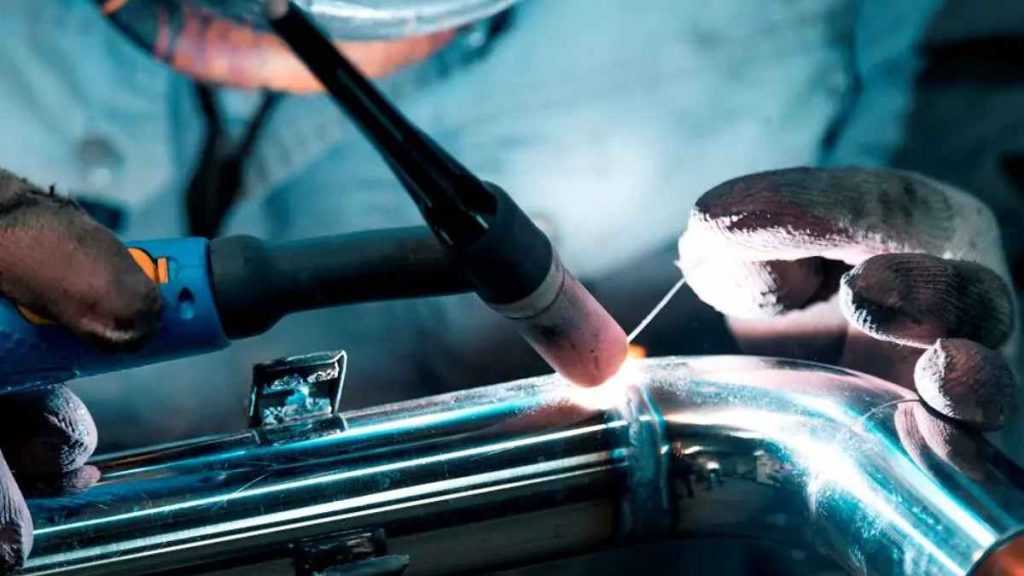In a diverse industrial landscape, TIG welding technology extends manufacturing processes, enabling manufacturers to create precise components that meet the highest precision, quality, and integrity standards. TIG welding provides high-quality welds for product performance and safety, whether in the aerospace, automotive, medical, or jewelry industry. The article explores the advantages of TIG welding that make it a sought-after choice for various industrial welding applications.
1. Narrow Weld Pool for Minimal Distortion
TIG welding produces a unique narrow weld pool thanks to the tungsten electrode. The narrow pool localizes the heat input, minimizing the risk of warping or distortion in the base material. That’s crucial in precision welding because it ensures that the workpiece retains its original shape and dimensions, meeting stringent quality standards.
An experienced TIG welder can control the weld pool’s size by adjusting these crucial parameters. For example, if the welder wants to produce a narrow weld pool, they can use a smaller diameter tungsten electrode, a lower amperage setting, and a faster travel speed.
The feature makes precision TIG welding indispensable in applications involving thin materials, intricate designs, or components that demand minimal distortion, such as aerospace components, medical equipment, and electronics manufacturing. The technology’s ability to maintain precision makes it a game changer in various industrial sectors.
2. Shielding Gas for High-Quality Welds
TIG welding relies on shielding gas to protect the weld from oxidation and contamination, a critical aspect of precision welding. This technology ensures a clean, high-quality weld by preventing issues like porosity or cracks. The importance lies in the weld’s reliability and integrity, meeting stringent industry standards.
The choice of shielding gas in TIG welding is critical and may depend on the component’s material and the desired welding characteristics. For example, Argon is a common shielding gas due to its exceptional inertness and cost-effectiveness. At the same time, helium is vital when welding non-ferrous metals like aluminum or when there’s a need for higher heat input.
It’s especially crucial in applications where the slightest imperfection could have dire consequences, such as nuclear reactor components, aerospace structures, or semiconductor manufacturing, making TIG welding a game changer for achieving uncompromising weld quality and performance, tailored to the specific requirements of each welding task.
3. Skillful Control for Precision
TIG welding is a skillful manual process granting experienced welders complete control over the operation, making it indispensable in precision applications. The hands-on approach allows skillful control for precise weld placement and the flexibility to make real-time adjustments as necessary. It’s a technique that empowers welders to craft precise, high-quality welds with flexibility, which is crucial in adapting to unique welding needs.
The importance of this control is paramount in applications demanding fine detail and minimal defects, like aerospace components, automotive parts, and delicate instruments. However, the technique requires an adept welder to blend TIG equipment and hand skills to produce quality and precise welds with the desired characteristics and a quality weld.
4. Versatility in Material Compatibility
Tungsten Inert Gas (TIG) welding stands out for its remarkable versatility in handling an extensive range of materials, including ferrous materials like stainless steel and non-ferrous materials such as aluminum, titanium, copper, nickel alloys, magnesium, carbon steel, brass, and bronze. The technique achieves adaptability by using a non-consumable tungsten electrode and an inert gas shield, preventing oxidation and contamination during welding.
TIG welding’s compatibility with ferrous and non-ferrous materials makes it a preferred choice for precision welding in various industrial applications. However, to ensure optimal results, it is imperative to engage the services of an experienced TIG welding company like Micro Weld, Inc., capable of selecting the correct electrode and shielding gas for each specific task for the best results.
Embrace the Versatility and Quality of TIG Welding with Experienced Welders
TIG welding’s precision, quality, and unmatched versatility make it indispensable in meeting diverse industrial welding demands. Its ability to seamlessly fuse an array of materials while preserving weld integrity highlights its crucial role in maintaining the highest standards of craftsmanship. TIG welding stands as a testament to the welding industry’s evolution, where adaptability and excellence converge to shape the future of precise, durable, and reliable welding solutions.
Laila Azzahra is a professional writer and blogger that loves to write about technology, business, entertainment, science, and health.
